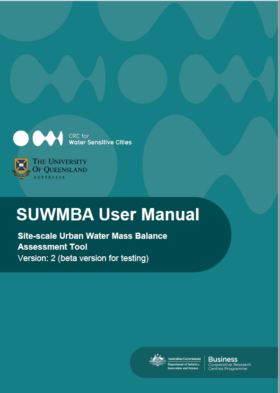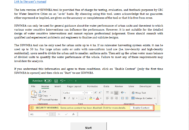User Manual for Site-scale Urban Water Mass Balance Assessment (SUWMBA) Tool V2
Introduction
Managers of urban area and urban water systems are investigating water sensitive urban design (WSUD) and water servicing options to mitigate the effects of urbanisation on natural hydrological flows, increase water efficiency, and improve resilience to droughts and floods. They increasingly need to know the current water sensitive performance of urban areas in relation to these objectives, what the desired water performance should be, and the extent to which various interventions can influence that performance. Understanding and managing water sensitive performance requires quantifying the water flows associated with an urban area.
The Site-scale Urban Water Mass Balance Assessment (SUWMBA) Tool does this by performing an urban water mass balance, which is a comprehensive account of all water flows in both the natural and anthropogenic water cycles (rainfall, evapotranspiration, stormwater runoff, imported water, decentralised water, wastewater, etc.). The water flows are estimated as annual volumes using daily time-step calculations. It provides a snapshot of all flows into, out of, and through an urban area, from which performance indicators can be derived.
In particular, the tool implements an urban water mass balance of a three-dimensional space/volume for all flows of water and water stored within that volume (e.g. in soil and rainwater tanks). Typically, the vertical boundary of this system is from the top of roofs/tree canopy to a depth of 1 m below the land surface. Throughout this document, the ‘space/volume’ assessed is referred to ‘urban entity’.
In assessing urban water mass balance, the sum of all inputs equals the sum of all outputs accounting for change of water stored within the entity. We use the mass balance approach to evaluate how the design of the urban entity influences all flows of water.

